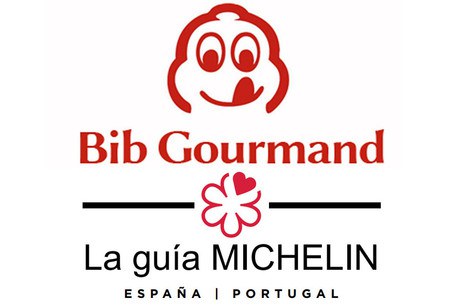Wine route
Spain is not only recognized worldwide for its delicious gastronomy, but also for the great quality of its wines. This country has no less than 69 designations of origin, as well as many other high quality wines and even some of the best organic wines.
So if you are a lover of good wine and also want to enjoy Spain and its different communities, we assure you that wine and tourism can go hand in hand and evidence of this are the many Wine Routes that our country currently has.
Perfect itineraries to enjoy the best tastings, the infinite beauty of its vineyards and to get even closer to the history and tradition of each wine.
Spain, country of wines
Spain is known not only as one of the most important wine producing and exporting countries in the world, but also as one of the most visited destinations for those who want to do wine tourism.
If we look at the figures, the trend is clear: wine tourism has done nothing but grow in recent times.
According to the latest Report of the Tourism Observatory of the Spanish Association of Wine Cities, last year this type of tourism reported an income of more than 85 million euros, which was a growth of 5.68% compared to 2018.
As for the number of tourists who traveled for this purpose, there were more than 3 million, up 3.9% over the previous year.
These are some of the best Wine routes of Spain:
Main Square of Villanueva de la Jara
Perhaps because it is a less known territory than others, the Wine Route of La Manchuela amazes almost everyone.
And it is not surprising when there are villages like Villanueva de La Jara that keep such fabulous corners as its Plaza Mayor where Renaissance-style buildings, an old Castilian inn, an arcade gallery with wooden pillars and a large nineteenth-century palatial house built in the historicist style are mixed.
La Seu Vella of Lleida
What is the favorite monument in Catalonia for its inhabitants? Well, according to a recent Catalan television contest it is the Seu Vella of Lleida.
The Lleida cathedral has been proclaimed winner in this striking competition, so, in case you have not yet contemplated it on a visit to the Wine Route of Lleida is a place that can not be overlooked. It dates back to medieval times and was worked on by Tuscan, Toulouse and Provençal masters.
Alcazar of Jerez
The architectural ensemble of the old Alcázar of Jerez de la Frontera is one of the essential heritage attractions when visiting another of the Wine Routes of Spain, the Wine and Brandy Route of the Marco de Jerez.
Some corners not to be missed are the prayer room and its huge dome, the Arab baths, the gates of the wall with its curved design, the octagonal tower, the keep, or the palace of Villavicencio, built on the ruins of the ancient Islamic palace.
Goyeneche Palace of Nuevo Baztán
In the 18th century, the so-called ‘novatores’ tried to renew commerce and industry in Spain, following doctrines such as that of the Frenchman Colbert, a supporter of national production.
Thus, southeast of Madrid, a whole town was built from nothing, designed for the industrial production of fabrics, alcohol, spirits, spirits, paper, soaps, glass, ink, wax, etc.
This is Nuevo Baztán, one of the villages of the Madrid Wine Route, which is also integrated in the Wine Routes of Spain. Around the Palace of Juan de Goyeneche, the driving force behind this idea, the very interesting guided tours take place today.
Royal Palace of Olite
One of the prototypes of medieval castles is this Royal Palace of Olite, on the Navarre Wine Route.
As explained in the guided tours, it was one of the most luxurious in Europe. Here was the court of the kings of Navarre until the conquest of Navarre and its incorporation into the Crown of Castile in 1512. Towers, passageways, halls, balconies, galleries and touring it is a pleasure.
Next to it, the well-known Palacio Viejo (today a Parador de Turismo) and the Gothic church of Santa María, with its spectacular Gothic façade with original polychromy, complete the ensemble.
Rioja Alta Wine Route
The Rioja Alta Wine Route is located in the wine-growing area par excellence of La Rioja, cradle of the wine culture and where some of the most prestigious wines of La Rioja come from.
The villages along this route are home to all the possible variety of wines produced in the large wineries, some of them centuries old, and also in the family wineries of small producers.
Wineries where there is room for all kinds of varieties, from vintages, crianzas, reserves, rosés, claros and whites, although there are some municipalities that are characterized by certain types of wine.
This is the case, for example, in San Asensio, the cradle of claret. A route that also has a unique historical-artistic heritage that has from dolmens to Romanesque hermitages, imposing Baroque churches, castles, fortresses, monasteries, or churches.
Jumilla Wine Route
The Jumilla D.O. is located in southeastern Spain and northeast of the Region of Murcia, between the transit zone of La Mancha, Andalusia and Valencia.
A territory with a long winemaking tradition since the Hispanic Romanization. Although archaeological excavations have found vines cultivated 5,000 years ago, it was not until the mid-nineteenth century, when the wine economy took off in Jumilla.
Strolling through its vineyards, visiting its wineries and learning about the winemaking process, staying in a rural environment, drinking a good wine, tasting the local gastronomy in its restaurants and buying typical products in its stores are some of the experiences offered by the Jumilla Wine Route.









